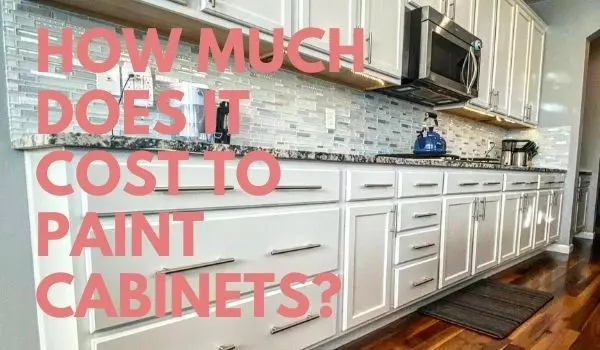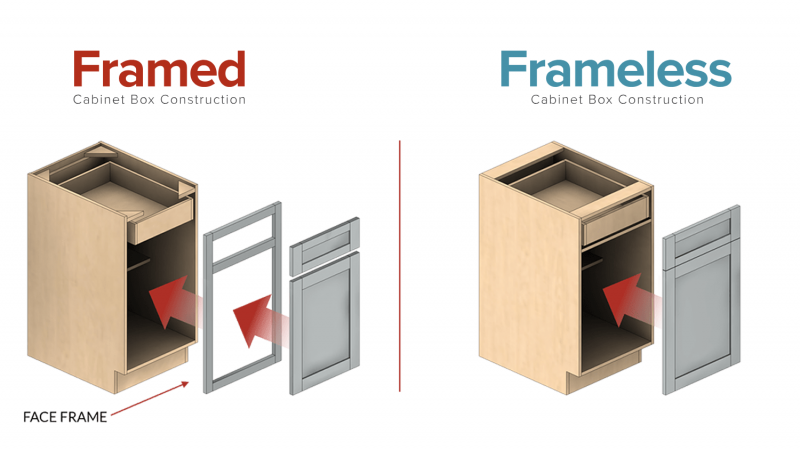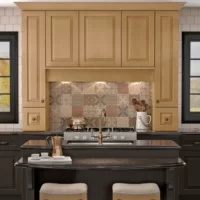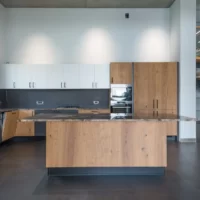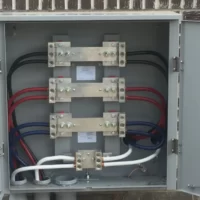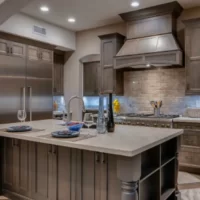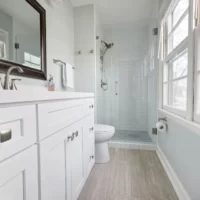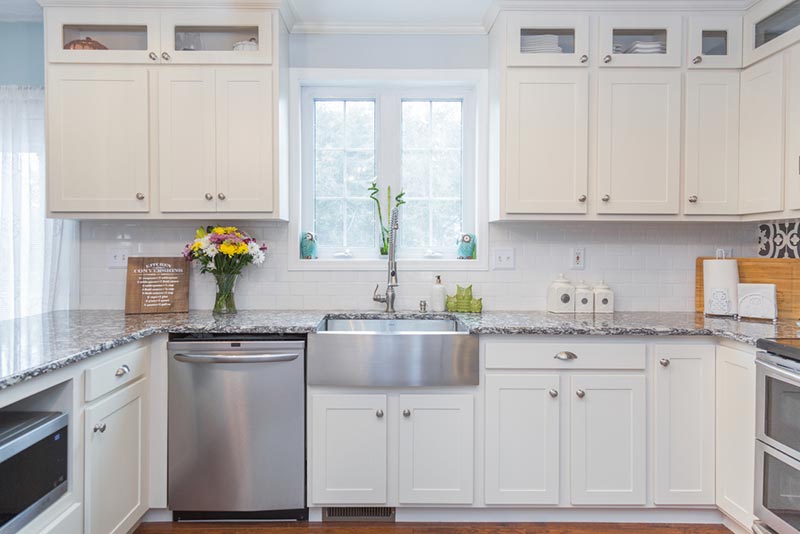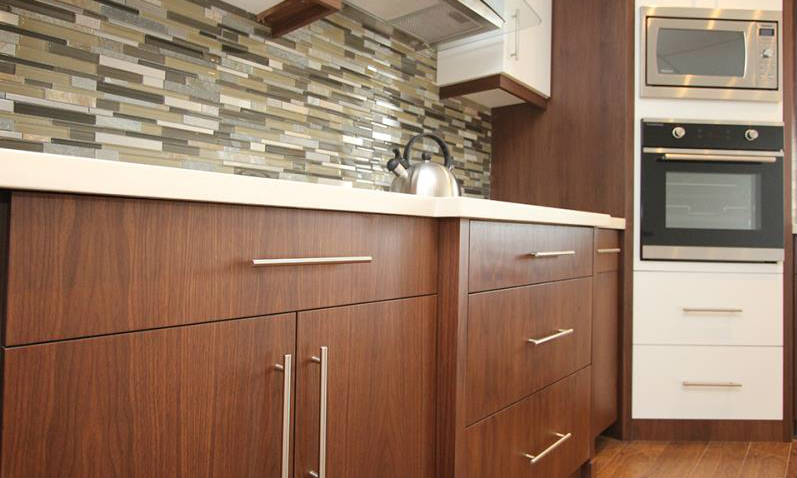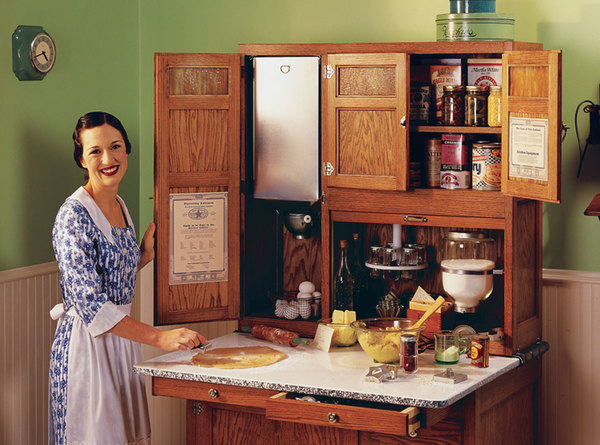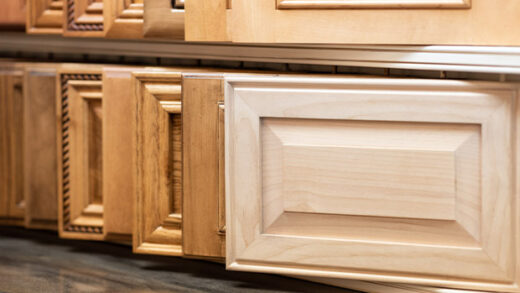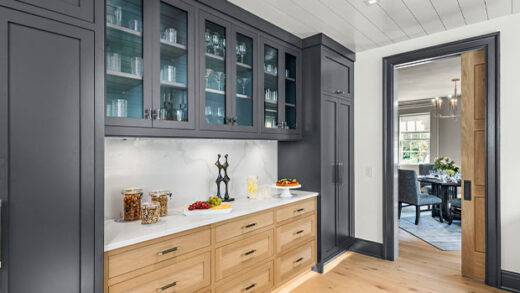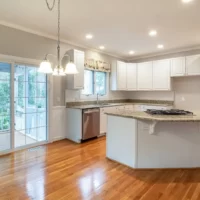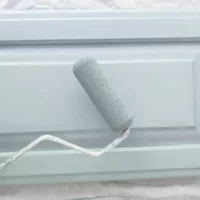What is a face frame cabinet? Unlike frameless cabinets, face frame cabinets, as the name suggests, have a border or frame that encircles the edge of the cabinet box. The face frame edges, which resemble a flat picture frame and range in width from 1 ¼ inch to 2 inches, are made up of stiles, which are the frame’s vertical components, and rails, which are its horizontal components.
In most cases, face frame cabinets have an overlay and exposed hinges. Plywood is the material of choice for the majority of cabinet box frames, but other common options include red oak, poplar, maple, and mahogany.
Learn more about face frame cabinets, and their advantages and disadvantages by reading on.
Table of Contents
What Is A Face Frame Cabinet?
Face frame, or “American style” cabinets, are a type of cabinet construction with a layer of trim around the edges of the face of the cabinet. Face frames are made with the intention that when the cabinet door is opened, the frame overlay will cover the inner corners of the cabinet box, giving the cabinet a more formal appearance. When both doors are closed, a center stile—a vertical division running the length of the cabinet box—can occasionally prevent a gap from appearing.
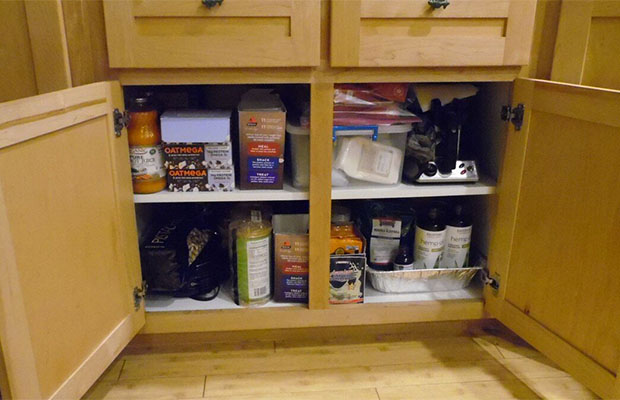
Different Types Of Face Frame Cabinets
Knowing the benefits of installing face frame cabinets, you must now ask yourself the following questions to determine the type of face frame you want to install. Do you want the doors to completely conceal the face frame? Do you prefer that the door sit inside the frame or do you prefer to see some of the frames? When making a selection, consider all of the different cabinet door options.
Inset Cabinet Doors
Inset cabinet doors have a very polished appearance. They are installed inside the cabinet frame, and opening the cabinet requires either a door pull or a knob. The hinges can either be hidden or made visible, depending on your preference.
Inset doors are typically more expensive and can cost anywhere from $150 to $1,200 per linear foot. Due to the fact that the drawers and drawers sit within the frame, this type of door offers the least amount of storage space compared to other door options.
Full Overlay Cabinet Doors
Modified overlay or full overlay doors cover the cabinet face and have concealed door hinges. More storage is possible thanks to the extra-large doors and drawers that are not mounted inside the cabinet frame.
This cabinet door style has the most seamless, modern, and contemporary appearance of the three options because it hardly shows the cabinet face frame around each door and drawer front. One disadvantage of full overlay cabinet doors compared to inset is that their corners are exposed, making it easier to develop nicks and damage over time.
Partial Overlay Cabinet Doors
With partial (or half) overlay cabinet doors, the entire face of the cabinets is covered by a constant 2-inch strip of the frame. Although some people prefer to have space between the doors and the drawers, if you prefer a sleeker, cleaner look, this may not be the cabinet door for your house.
Partial overlay doors require less wood to build than full overlay doors, but they are of equal quality. Remember that because there is a lot of space between each cabinet, partial overlay cabinet doors frequently appear disproportionate.
Benefits Of Installing Face Frame Cabinets
Your home’s design and your needs as a household will influence the cabinets you choose. Consider the advantages and disadvantages of face frame cabinet installation to help you make the best choice for your kitchen. Here are some of the main advantages to face frame cabinets:
- Adapts to all types of overlay: Although both frameless and framed cabinets come in a variety of options and designs, a face frame is more versatile when it comes to installation and can accommodate all overlay types.
- Traditional look: As the most popular type of cabinetry in American kitchens, framed cabinets are also referred to as traditional-style cabinets. This type of cabinet can be altered to fit a variety of kitchen themes, from traditional to country farmhouse.
- Budget-friendly: If you’re looking to update your kitchen cabinets, face frame cabinets are more affordable than frameless cabinetry. You can expect to pay $5,000 to $20,000 or more for framed cabinets, while frameless cabinets cost between $6,000 to $30,000 or more.
- Adaptable: Kitchens with unevenly shaped or imperfectly squared walls can be easily modified with framed cabinets.
- Hinge options: When it comes to types of cabinet hinges, you have the option to choose either hidden or visible hinges with framed cabinets. Adding decorative hinges will enhance the appeal of your cabinets.
Drawbacks Of Installing Face Frame Cabinets
Although there are many benefits to choosing face frame cabinets, you should be aware of these benefits before installing them in your home. Here are some of the main disadvantages of face frame cabinets:
- Less drawer box capacity: Although they are more durable, framed cabinets have a little bit less interior space than frameless cabinetry—about 1½.
- Limited accessibility: The frame can make it difficult to slide out bulkier or oddly shaped kitchen tools, which can cause drawers to become jammed.
Tips For Assembling & Installing Face Frames
- Use pocket hole joinery. Without placing too much stress on the wood, pocket hole joinery securely fastens both cabinetry pieces.
- Use PVA glue to attach the face frames to the cabinet box. PVA glue is a powerful, long-lasting wood glue that does away with the need to cover up screw holes on the outside.
- Keep at least five to 10 wood clamps on hand per cabinet box. Wood clamps serve as a second pair of hands along the perimeter of the cabinet box, smoothing gaps along the frame while everything is installed. They not only assist in holding face frames to cabinet boxes while the glue dries, but they also help secure them while the glue is drying.
- After fastening the face frame to the cabinet box, sand it using a belt sander. This will ensure that the face frame is perfectly level with the box and will also smooth out any installation marks. If you sand the face frame before attaching it, the frame may become marred and difficult to smooth later.
Read More: Cabinet Vs Cupboard

